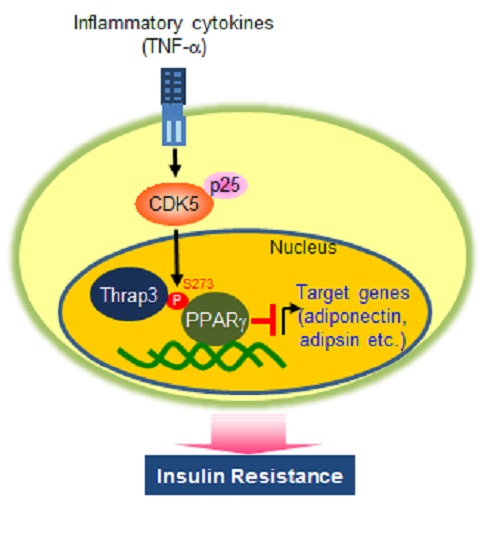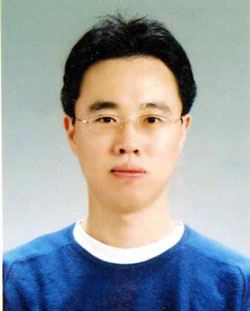-
 Korea.net's 24-hour YouTube channel
Korea.net's 24-hour YouTube channel- NEWS FOCUS
- ABOUT KOREA
- EVENTS
- RESOURCES
- GOVERNMENT
- ABOUT US
A domestic research team has identified a new protein that may provide opportunities for the development of new therapeutics against diabetes.
The team, led by life sciences Professor Choi Jang-hyun at the Ulsan National Institute of Science and Technology (UNIST), has successfully identified thyroid hormone receptor-associated protein 3, or Thrap3, a protein that controls diabetic gene programming.

The team's research found that phosphorylated peroxisome proliferation-activated receptor γ (PPARγ), known as a vital antidiabetic protein mainly present in adipose tissue that regulates fatty acid storage, can stimulate diabetogenic genes when it is phosphorylated. In the process, Thrap3 plays a crucial role in controlling diabetic gene programming, as it directly interacts with the phosphorylated PPARγ.
 The team found that this interaction can stimulate diabetic genes, causing diabetes, as can be evidenced in their tests using lab rats. A reduced expression of Thrap3 regulates a specific set of diabetogenic genes and effectively lowers blood sugar, the team found.
The team found that this interaction can stimulate diabetic genes, causing diabetes, as can be evidenced in their tests using lab rats. A reduced expression of Thrap3 regulates a specific set of diabetogenic genes and effectively lowers blood sugar, the team found.
“So far, we have been using a method that regulates PPARγ to cure diabetes, but this method has many side effects. This breakthrough discovery concerning Thrap3 will help us find a new treatment for the disease that probably will not have as many side effects,” said Professor Choi.
The study results were published in an October 14 article in the scientific journal Genes & Development.
By Sohn JiAe
Korea.net Staff Writer
Photos: the Ministry of Science, ICT & Future Planning
jiae5853@korea.kr
The team, led by life sciences Professor Choi Jang-hyun at the Ulsan National Institute of Science and Technology (UNIST), has successfully identified thyroid hormone receptor-associated protein 3, or Thrap3, a protein that controls diabetic gene programming.

Thrap3 directly interacts with the phosphorylated peroxisome proliferation-activated receptor γ (PPARγ) and can stimulate diabetogenic genes.
The team's research found that phosphorylated peroxisome proliferation-activated receptor γ (PPARγ), known as a vital antidiabetic protein mainly present in adipose tissue that regulates fatty acid storage, can stimulate diabetogenic genes when it is phosphorylated. In the process, Thrap3 plays a crucial role in controlling diabetic gene programming, as it directly interacts with the phosphorylated PPARγ.

UNIST Professor Choi Jang-hyun
“So far, we have been using a method that regulates PPARγ to cure diabetes, but this method has many side effects. This breakthrough discovery concerning Thrap3 will help us find a new treatment for the disease that probably will not have as many side effects,” said Professor Choi.
The study results were published in an October 14 article in the scientific journal Genes & Development.
By Sohn JiAe
Korea.net Staff Writer
Photos: the Ministry of Science, ICT & Future Planning
jiae5853@korea.kr
Most popular
- First hearing-impaired K-pop act hopes for 'barrier-free world'
- 'Mad Max' director impressed by 'cinema-literate' Korean viewers
- Romanian presidential couple visits national cemetery
- 'Korean mythology is just as wonderful as Greek and Roman'
- Hit drama 'Beef' wins awards from 3 major Hollywood guilds













